Despite challenging conditions, beached humpback whale gets a proper burial
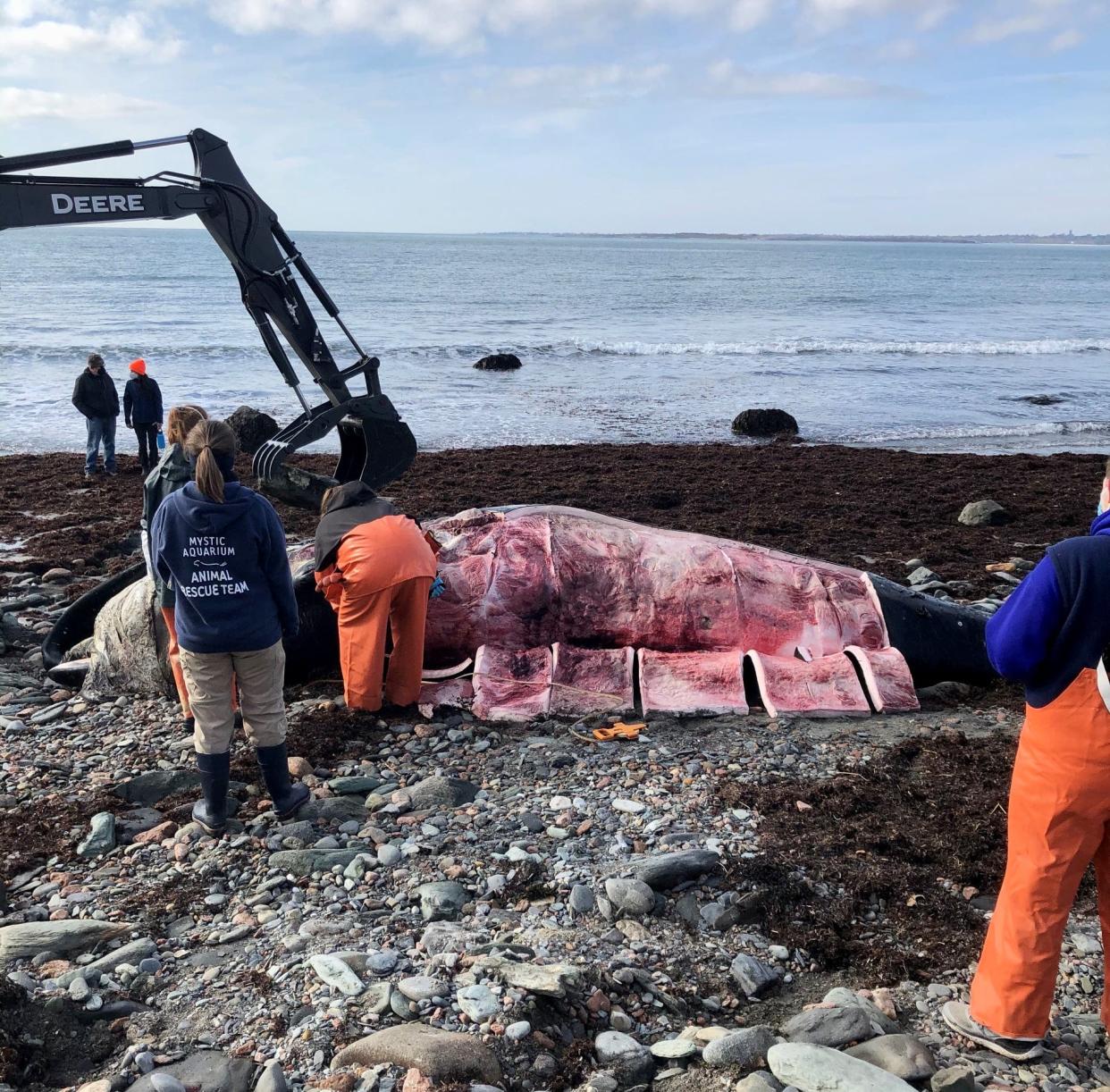
Burying a 10-ton, 25-foot humpback whale that washes up on a rocky stretch of Little Compton's shoreline in wintertime is no easy task.
But a brief break in this week's bone-chilling weather — and help from a nearby dairy farmer — allowed the Department of Environmental Management to do so on Thursday.
Best of all, scientists were able to conduct a necropsy that could shed light on why the young whale died despite lacking any visible injuries, said Scott Olszewski, deputy chief of DEM's division of marine fisheries.
"You have to seize these opportunities as often as you can," Olszewski said.
Though the results of the necropsy won't be available for a while, the process resulted in one surprise discovery: The stranded whale was actually a female. Initially, it had been identified as a male, due to swelling and bloating in the reproductive area.
Previously: Dead humpback whale washes up in Little Compton; cause of death unknown
The humpback washed up at Church Cove, about two miles up the Sakonnet River. It was discovered last Saturday by a commercial fisherman who is based out of Sakonnet Harbor, and was combing the shoreline for a missing set of oars from his dinghy, Olszewski said.
After getting the call, DEM alerted Mystic Aquarium and the Atlantic Marine Conservation Society, which are part of a national network that races to get to washed-up marine mammals before they've decomposed, so that scientists can figure out what killed them.
The question was how to reach the whale, which sat at the bottom of a steep embankment.
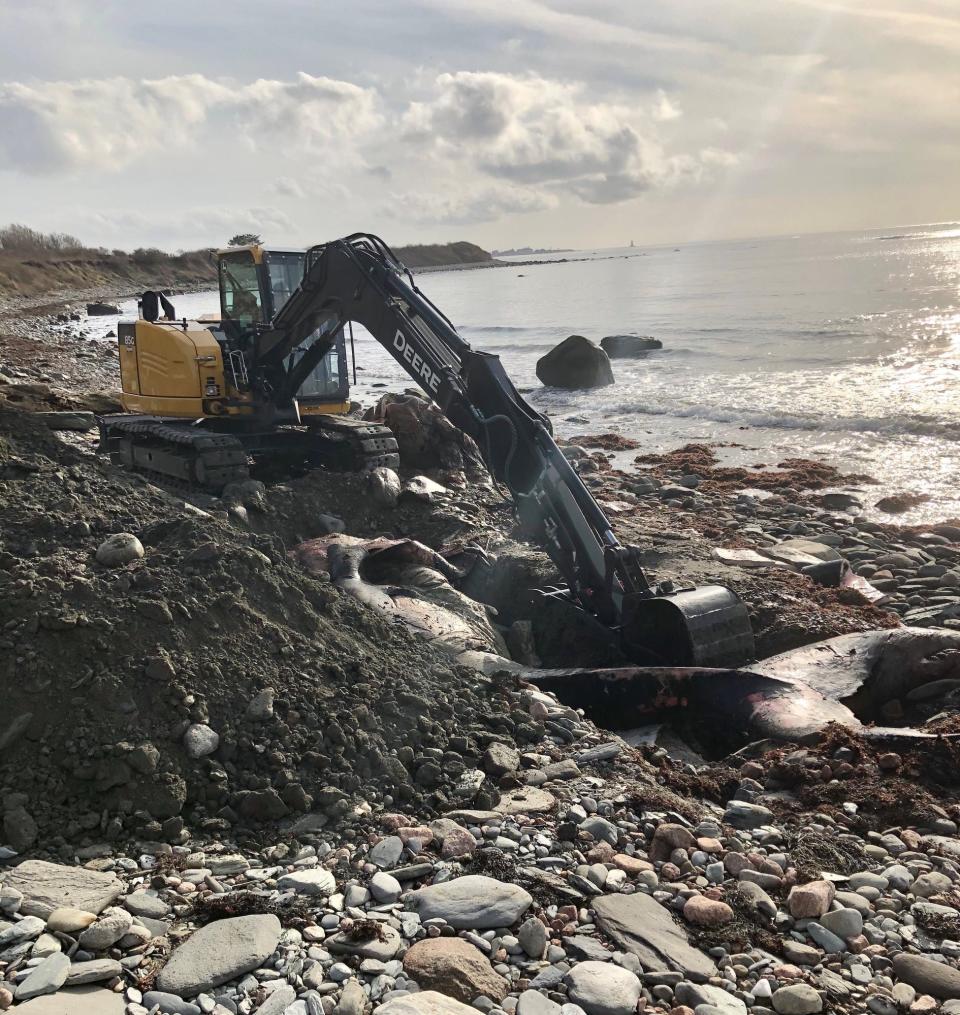
Dissecting a 10-ton creature requires heavy equipment. And getting to the cove from the nearest public access point at Taylor's Lane involved a mile-long scramble over rocks and boulders.
"Our first thought was to try to tow it off the beach, and across the mouth of the Sakonnet River over to Third Beach in Middletown," Olszewski said.
That would have been a complicated maneuver — and it ultimately wasn't necessary. The DEM contacted Little Compton's police chief, "who, obviously, being in a small community, knows most of the residents," Olszewski said. It turned out that the whale had washed up near a dairy farm whose owner was willing to let them cut across his property.
More: After fishermen rescued due to reported whale strike, boating among giants 'nerve-wracking'
Rhode Island law grants DEM employees a certain amount of latitude to walk across private land in order to carry out their duties, but the agency nonetheless opts to get permission. And that's usually not much of a challenge when dealing with stranded marine mammals, Olszewski said.
"Especially if they start to decompose and they smell, a lot of people just want them gone," he said.
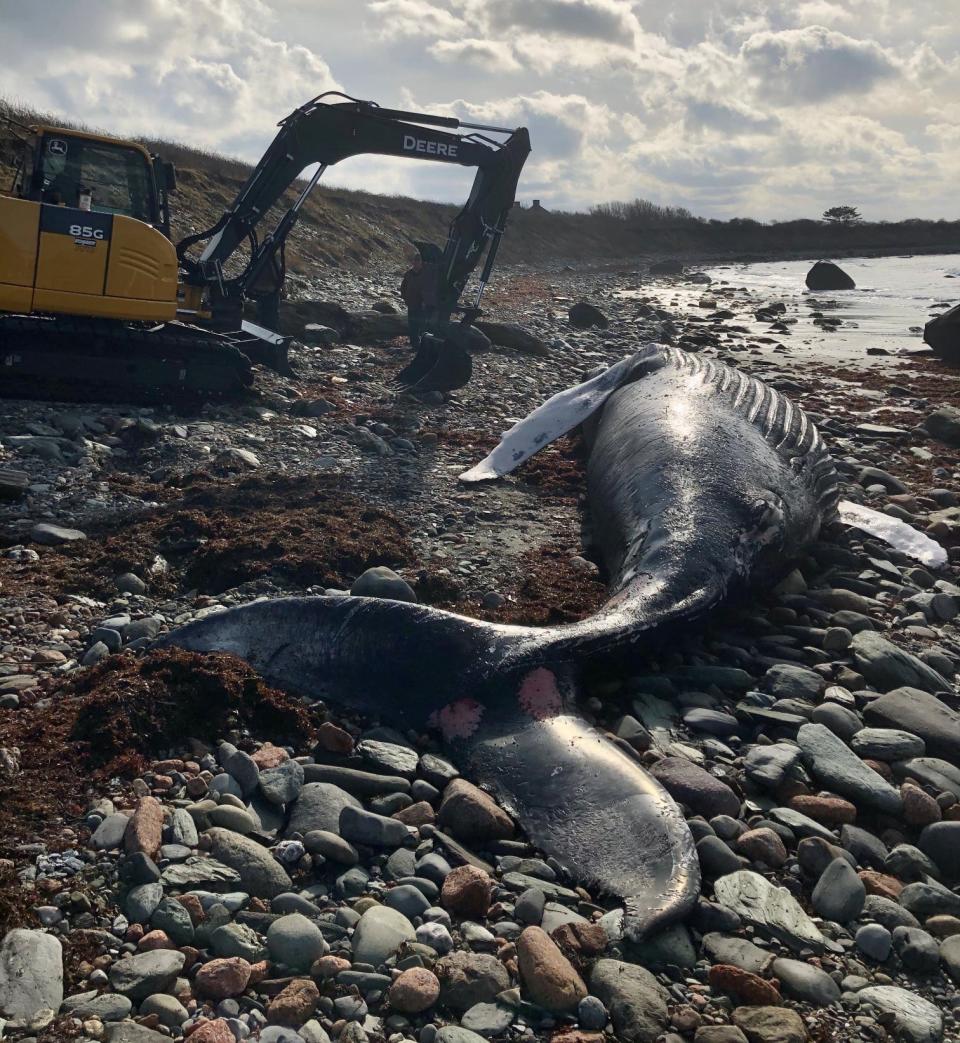
Of course, that doesn't mean that landowners will also be willing to let a whole team of scientists trek through their property, or have an excavator drive across their grass.
"We were really lucky that we had the cooperation between the landowner and our team," Olszewski said. "Otherwise, I'm not sure the necropsy would have been able to take place."
Conveniently, the farm also had "a bit of a natural ramp" leading down the shoreline, which farmers historically used when collecting seaweed, Olszewski said. That made it possible for heavy equipment operators who typically do maintenance for the DEM's management areas to drive an excavator onto the beach.
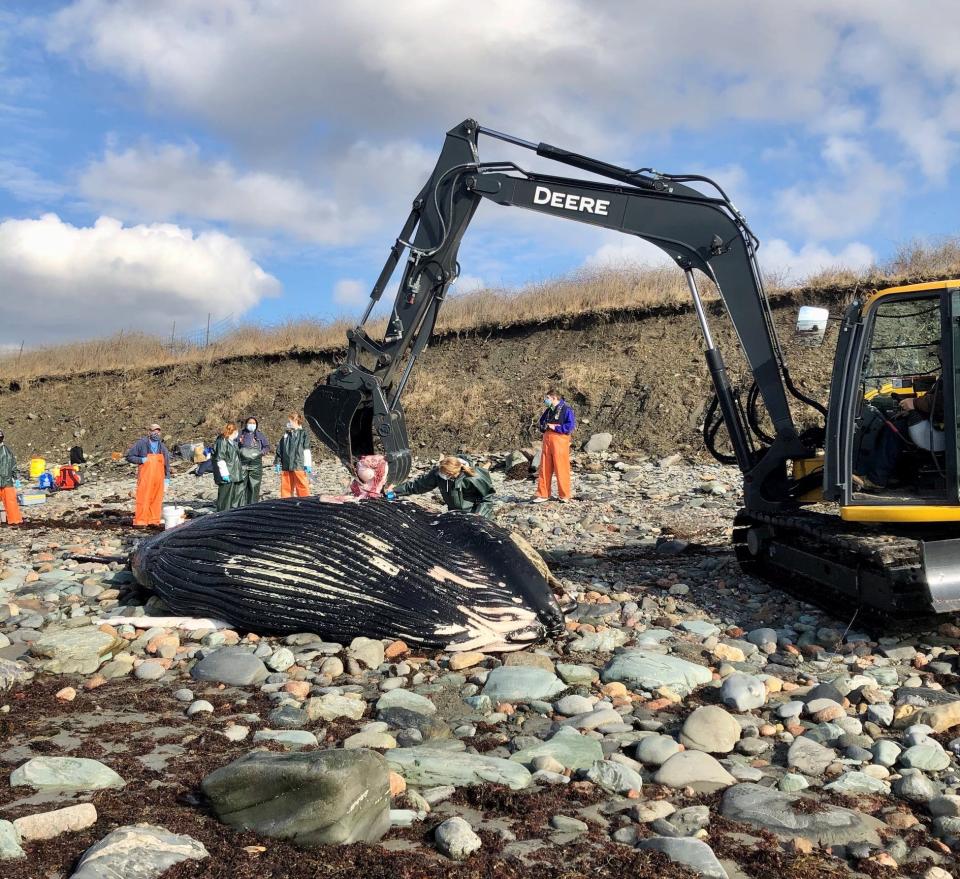
The next challenge was the winter weather.
On one hand, the whale wasn't decomposing as quickly as it would in summer. On the other hand, gale-force winds and below-freezing temperatures weren't conducive to the day-long process of conducting a necropsy on the beach.
Luckily, sunshine and 40-degree weather arrived on Thursday, which proved to be "a very, very nice day, as far as January goes," Olszewski said.
More: Climate-change clues contained in whaling logbooks kept in the Providence library
The Mystic Aquarium and Atlantic Marine Conservation Society scientists collected samples of the whale's tissue, and Olszewski said there are numerous analyses that will need to be completed before a cause of death is determined.
There was no sign that the humpback had been snared by fishing ropes or hit by a boat, and Olszewski said that he didn't get any indication on Thursday that it had ingested plastic.
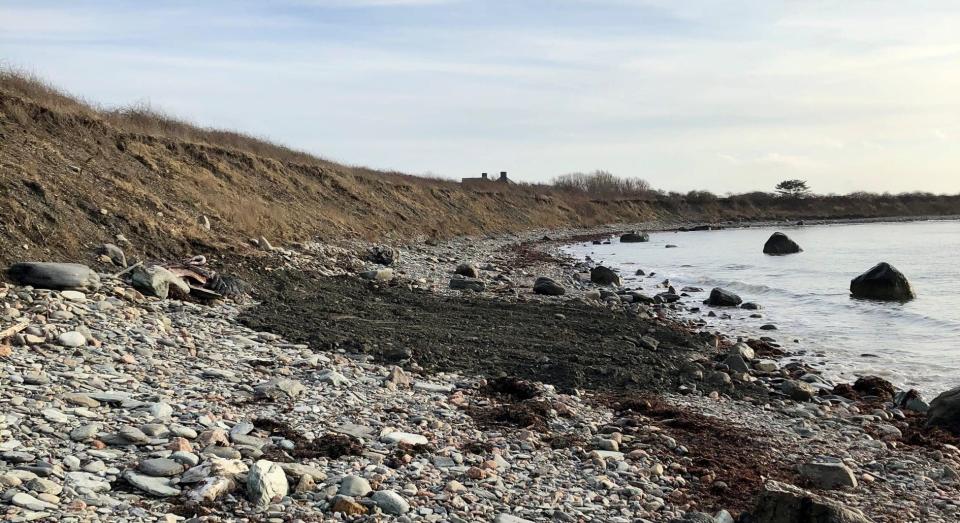
Initially, the DEM had warned that the whale would probably have to be left to decompose naturally. But the rock-strewn beach turned out to be soft enough for Bob Reynolds of the DEM's Fish and Wildlife Division to dig a 20-foot trench with an excavator and cover the whale with sand after the necropsy was complete.
By then, the whale was already smelling rank.
"Even after I changed my clothes and showered last night, I was still smelling it," Olszewski said.
This article originally appeared on The Providence Journal: Dead whale washed up on shore in Little Compton is buried

